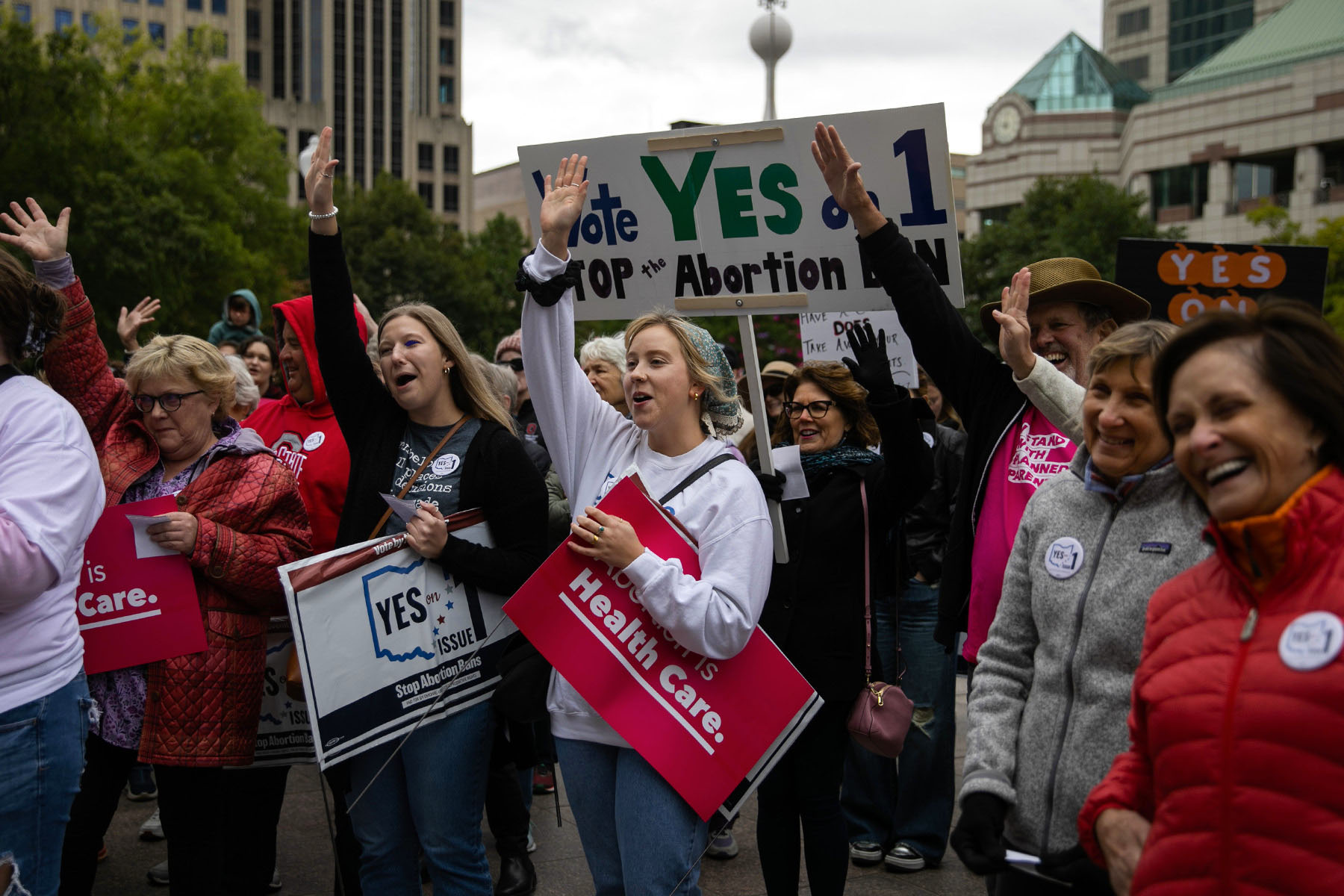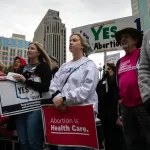Your trusted source for contextualizing the results from Election Day 2023. Skip the algorithm and sign up for our daily newsletter.
Ohio voted to guarantee a right to abortion and other reproductive health care in the state’s Constitution, Decision Desk HQ projects, in the latest victory for abortion rights advocates at the ballot box.
The constitutional amendment, Issue 1, enshrines a right to abortion, contraception, miscarriage care and fertility treatment in Ohio. The amendment will take effect in 30 days.
-
Read Next:
“The future is bright, and tonight we can celebrate this win for bodily autonomy and reproductive rights,” Lauren Blauvelt, executive director of Planned Parenthood Advocates Ohio, said at an election night party for the coalition supporting Issue 1. “Today, Ohioans made it clear abortion is a winning issue.”
Ohio was the only state voting directly on abortion in 2023, drawing national attention and tens of millions in outside spending. The passage of Issue 1 makes for a 7-and-0 ballot measure winning streak for reproductive rights advocates since the Supreme Court overturned Roe v. Wade in June 2022.
The victory of an abortion rights ballot measure in a state that twice voted for former President Donald Trump gives a boost to advocates seeking to put similar measures on the ballot in red and purple states in 2024.
“As it relates to passing Issue 1, the stakes could not be higher,” Democratic Rep. Shontel Brown, who represents Cleveland in the House, said Tuesday. “Ohio continues to be a barometer, a test case, if you will, for the rest of the country.”
A coalition of Ohio physicians and reproductive rights advocates started working in 2022 to get Issue 1 on the ballot. After the Supreme Court overturned Roe v. Wade that June, Ohio’s six-week abortion ban, which has no exceptions for rape or incest, went into effect. The state’s ban made national news with the case of a 10-year-old rape victim who was forced to travel to Indiana for abortion care and stories of couples who had to leave the state for care for nonviable pregnancies.
Dr. Marcela Azevedo, a pulmonologist and co-founder of Ohio Physicians for Reproductive Rights, said the movement’s work would be felt “for generations” to come.
“It’s a movement that reflects the unbeatable Ohioan spirit,” she said Tuesday night. “Ohioans put this issue on the ballot, and Ohioans passed the reproductive freedom amendment. Issue 1 is not really text in the Constitution, but it’s a living testament to what we can achieve when we stand together.”
A lower court blocked Ohio’s six-week ban in late 2022, allowing providers to perform abortions through 22 weeks of pregnancy, and the Republican-controlled state Supreme Court heard arguments in a case challenging the ban in late September.
Proponents of Issue 1 argued the measure would protect Ohioans from government interference in private medical decisions. Their ads also highlighted the lack of exceptions for rape and incest in the ban.
Rather than defend the six-week ban, opponents of Issue 1 argued the measure would go too far, asserting it would allow unlimited abortions through all nine months of pregnancy. The amendment allows for restrictions on abortion after the point of fetal viability, and abortions later in pregnancy are rare in Ohio.
Protect Women Ohio, the leading coalition opposing Issue 1, said in a Tuesday night statement that their hearts were “broken” by the results and that the amendment “does not represent Ohio values.”
“This is not the Ohio way, and we are united in our fight against these extreme policies,” the group said.
Opponents had argued that the amendment would infringe on parental rights and would threaten Ohio’s law requiring parental consent for minors receiving abortions, though legal experts said the amendment would not automatically invalidate the parental consent law.
Republican leaders in the state, where the GOP has a legislative supermajority, have also taken costly and unprecedented efforts to thwart the measure’s passage.
After previously canceling August special elections due to their high costs and low turnout, Republicans added one back solely for a vote on a GOP-backed measure to raise the threshold for passing a citizen-led amendment from a simple majority to a 60 percent supermajority. Republican leaders including Secretary of State Frank LaRose explicitly said the vote was about stopping November’s Issue 1 from passing.
Ohio voters, including many Republicans and independents, rejected the August measure by a margin of 14 points. The result, and the massive turnout in an August special election, was an encouraging sign for abortion rights supporters. Early voter turnout was also high in the November election, and Issue 1 supporters outspent their opponents on the airwaves and on digital ads.
Susan B. Anthony Pro-Life America, a national anti-abortion group, said Tuesday night that Issue 1 passed because abortion advocates and Democrats “ran on a lie” that women would die under an abortion ban.
“The lesson: pro-life, pro-women coalitions will need to devote more resources to combating the campaign of fear from the other side,” the group said.
False and misleading claims about the measure and misinformation about abortion — some of which came from official government sources and elected leaders — also became widespread in the final weeks of the campaign.
Many abortion rights advocates saw Issue 1 as a fight over not just reproductive rights but over Ohio’s democracy itself. In 2024, the state has a critical U.S. Senate race on the ballot, and advocates are aiming to put an amendment establishing a citizen-led redistricting commission on the ballot.
Brown also said it was important for the state to send a message to national Republicans that abortion is “a losing issue” for them and they would be “on the wrong side of history.”
But the fight over abortion in Ohio may not be over: State Senate President Matt Huffman said in a Tuesday night statement that the vote was “really just the beginning of a revolving door of ballot campaigns to repeal or replace Issue 1.”








